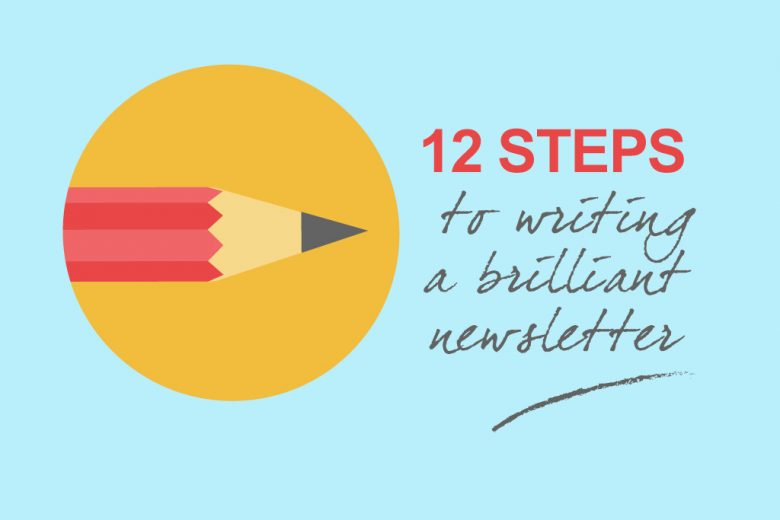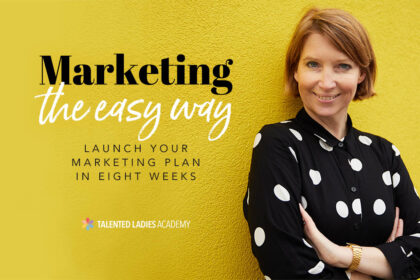12 easy steps to writing a brilliant newsletter
Newsletters are a vital marketing tool for many businesses – they help keep you front of mind with your customers, and encourage them to visit your site and take up your latest offers. But what exactly makes a good newsletter?
Newsletters are a great way to maintain contact with your current customers, as well as attract new ones. They’re cost-effective, low maintenance, measurable and can be really beneficial when written designed, written and delivered correctly.
But just what does make a great newsletter design? And what on earth should you include in it? Marketing consultant Nicole Martin reveals the who, what, where, when and how of writing a newsletter, with insider tips on how to ensure your customers actually look forward to receiving it (and not simply consign it to junk).
Why have a newsletter in the first place?
Newsletters have plenty of valuable business benefits, and should be one of your key sales tools. To start with they’re a great way to communicate all kinds of messages, including:
- Special announcements.
- New products and services.
- Company news.
- Change of company details.
- Special offers.
- Testimonials.
- Highlight key products.
A well-planned newsletter will also help you to:
- Remind your customers that you exist!
- Boost sales.
- Build your brand.
- Increase customer loyalty.
- Raise awareness of your offering.
- Encourage traffic to your website or shop.
However, you can’t just dip in and out of newsletters. Once you start them, you need to keep them up. Newsletters only work when they are produced and distributed on a consistent basis, and this means that you need to see your newsletter as a long term commitment – and be prepared to invest the time and effort into regular updates.
12 easy steps to writing a brilliant newsletter
To help you get your newsletters off to the best start (and keep going) I have put together 12 easy steps to writing a brilliant newsletter – answering some of the questions I get asked most often by my own clients.
1) Who will you send your newsletter to?
In order to send out a newsletter, you need an audience. But who are they? Are they staff, customers, suppliers or contacts – or a mix of all three?
The ideal audience for your newsletter will partly stem from the objectives you have set for it. You may need to write two separate newsletters or be mindful of what you say and how you say it if the same newsletter goes to your customers and staff – for example, sensitive or confidential information may not be appropriate for customers and staff at the same level.
Once you know who you will send to, you will need to keep findings ways to grow your recipient list. (Some good ideas include giving away something free for joining, such as an ebook or pdf of quick hints and tips.)
2) What format should you use?
The next thing to decide is what layout and format to use. It’s a good idea to establish a simple format and stick with it. As with frequency, consistency of look is the key – people will expect to see the same pieces/items in the same place each time.
Not only can they recognise the style as being yours and find what they’re looking for, a familiar format will allow them to speed read if they are short of time.
3) What style should you pick?
The style you pick for your newsletter will depend on the perception you want to create. Some things to take into account include:
- Who are your audience and what do they like?
- What’s your brand personality and look?
- What niche or industry is your business in?
- Do you want your newsletter to be informal or serious?
- Would you like it to be sales-like or more educational?
4) What branding should you include?
It’s important that your newsletter is branded, so customers will know it’s from you. It’s essential, for example, that you include your logo and tagline, and you should also ensure that you always stick within your set of style guidelines.
So what do I mean by style guidelines? Basically you need to have a consistent font, font size, colourings and wording. Not only does this need to be the same in all your newsletters, but it should match your website and any printed materials.
Your phone number and website address should also be displayed prominently and repeatedly so people can easily find these details.
5) How long should a newsletter be?
Ideally, your newsletters will be short and succinct – without scrimping on the quality and quantity of good content.
If you are printing your newsletters, perhaps go for a double sided sheet. If you plan to email them, you may want to try to include the copy on one screen to avoid lots of scrolling, or make it no larger than A4.
However, by going for more than one screen size, you won’t be tempted to save on space by using small and illegible fonts.
6) What’s best? HTML or plain text?
The answer to this question depends partly on what format your contacts receive messages in. In general, Yahoo and Google email addresses prefer plain text without images, while most other email systems can cope with more intricate HTML messages.
All online software systems used to send mass email campaigns will generate both types of message to ensure that everyone is happy.
7) Who will put your newsletter together for you?
If you’re a small, start-up business, the chances are there’s only one person you can ask to produce your newsletters – and that’s you! But if you have more resources, you may want to ask a member of staff to help, or outsource them to a marketing consultant.
Be wary of using a virtual PA to write your newsletter solely for you. They will certainly be equipped with the skills to distribute, track and handle your data, but are they copywriters or are they able to write compelling marketing and sales messages?
Before you pay anyone to produce your newsletters on your behalf, it’s always a good idea to check their skill set and ask for case studies and references.
8) What should you put in your newsletter?
As well as focusing on achieving your marketing objectives, make sure you also use your newsletter to promote your:
- Website – simply include a web link.
- Products – perhaps have a product of the month section where you detail the features and benefits of your chosen product.
- Suppliers – do you have any complimenting suppliers that you could promote? (And in return they can promote you in their newsletters.)
- Clients – do any of your clients offer a service or produce a product that is perfect for your target audience?
- Key Customers – again, do any of your customers provide complimentary products or services, and can you promote each other?
9) How can you generate content?
So you have a beautifully-designed, on-brand newsletter ready to go out to thousands of eager customers. Where can you now get inspiration from to ensure you meet the needs of your customers and ensure they remain interested? Here are just a few ideas:
- Refer to your marketing plan and business plan – what objectives have you set, and therefore what messages do you need to get across to achieve these goals?
- Ask around – ask key customers and suppliers what content they would like to see. Ask for feedback and content suggestions when you are networking.
- Look at other newsletters you receive – what do you like and dislike about these? Use the same themes, without overtly copying them.
- What do people want to know – what questions do you get asked a lot when people come into your shop or when they email your company for the first time? Focus on these issues.
- Include information key to the market you are in – for example, are you an accountant or book keeper? Changes to the market such as VAT changing back to 17.5% could be a good tip or area to focus on.
- Create regular topics – ensure your template has sections in it to cover the same areas each time, such as latest news, diary, top tips, contact information, promotion of the month and so on.
10) How do you write a great headline and subject line?
Your subject line needs to hook people into opening the email and reading it (or the main headline entice someone to pick a printed newsletter up). So make the benefits obvious – for example, will it help someone to save money, be able to do something they previously couldn’t or make money?
Include a hook within the benefits. This hook will have maximum impact if it answers a burning question or suppresses or responds to an emotion.
The more personalised and relevant a subject line or headline (and content) is, the more chance you have of the recipient taking notice of your email.
Simple things like addressing the newsletter to someone’s name and not ‘Dear Customer’ always helps. But if you do decide to personalise your emails, ensure you spell their names correctly!
11) How can you avoid your newsletters being junked?
You don’t want to go to the effort of creating a brilliant newsletter just for it to go straight into someone’s online or actual bin. So what can you do to ensure it gets read? Here are some tips:
- Include a clear and specific subject line.
- Think about how the recipient might respond to your message. Is it in any way offensive or rude?
- Don’t use offensive or unethical language.
- Don’t use ALL CAPS.
- Do NOT send to anyone who has opted out and asked not to receive communications from you.
- Don’t send very sensitive or private content by email.
12) Last but not least – check before you send!
By now you should hopefully have a much better idea of how to put together some effective newsletters for your business. But there’s one more, essential piece of advice you need to heed every single time. And that’s to check before you send.
Just one typo or picture that doesn’t work can let down your entire effort and give the wrong impression of your business. So always test your newsletter before sending the first one, and never send it out without proofreading and spell checking!
Nicole Martin is an experienced and reliable marketing consultant, specialising in small businesses. You can find out more about her services on her website and download her ebook ‘How to write a brilliant newsletter’ here.










